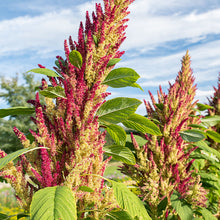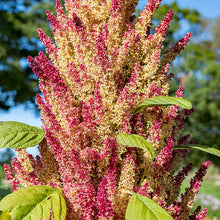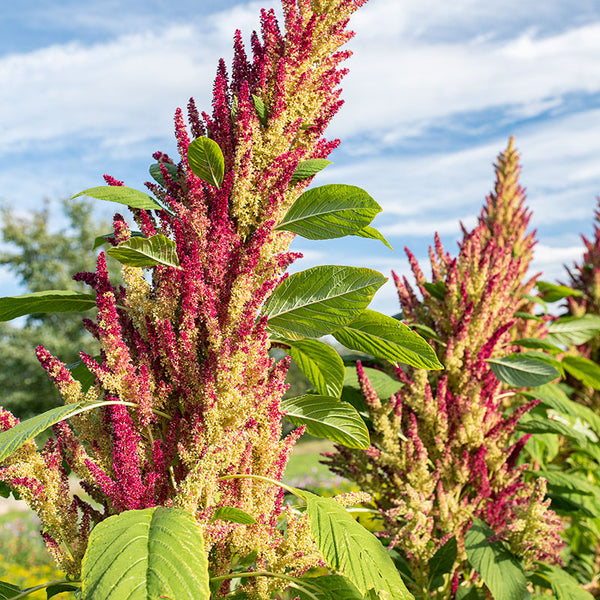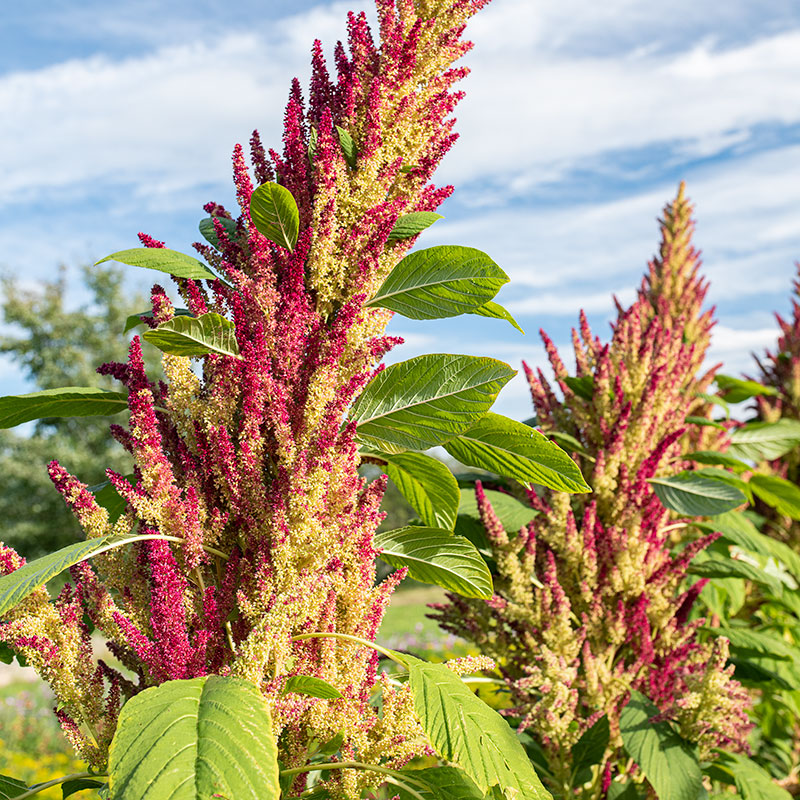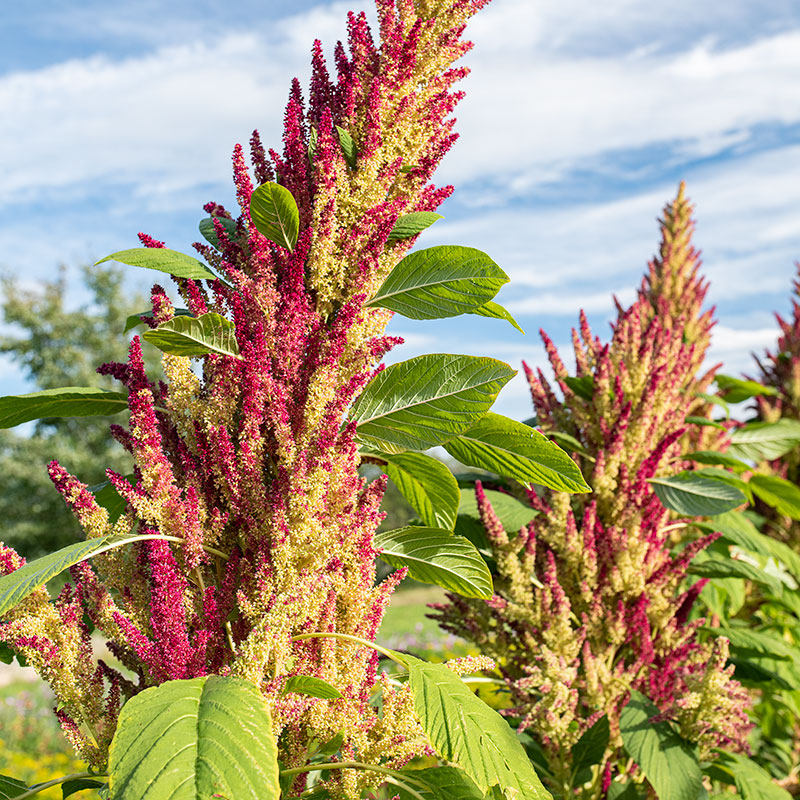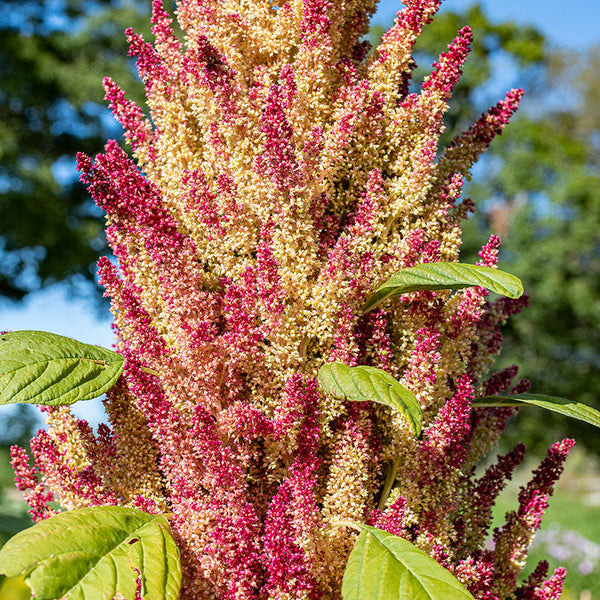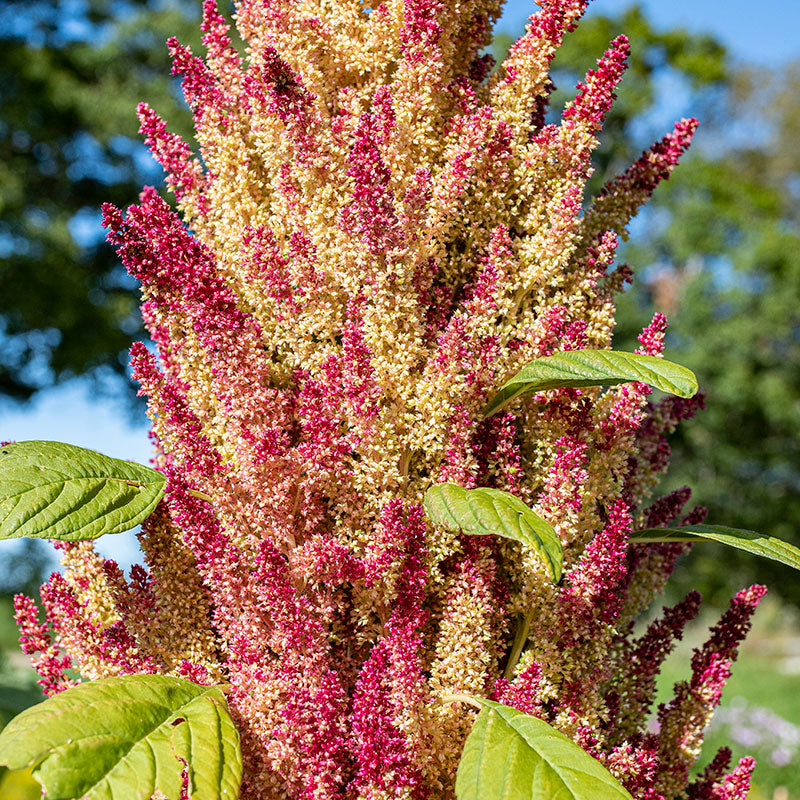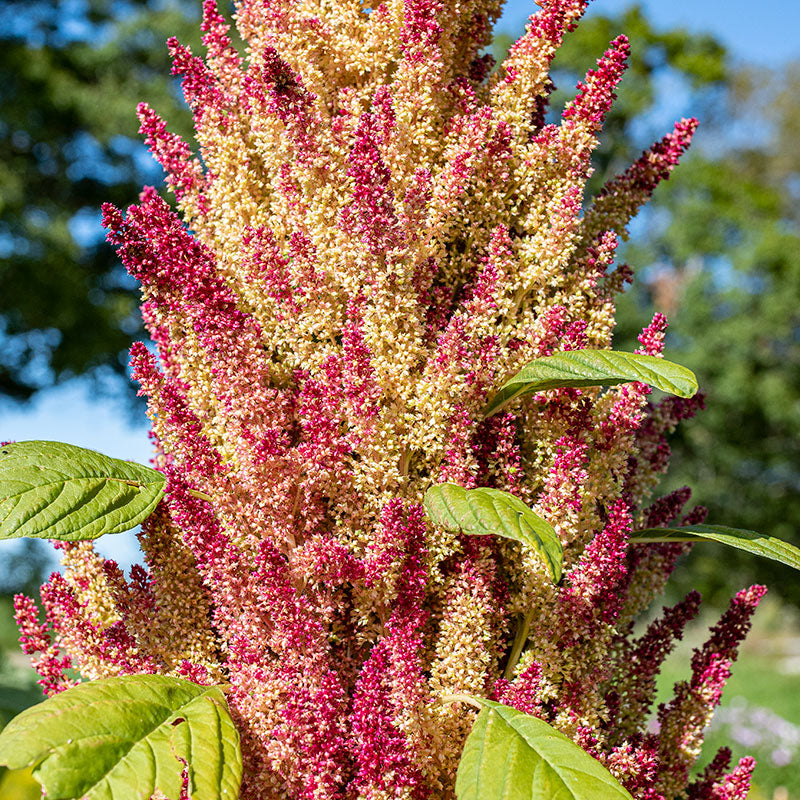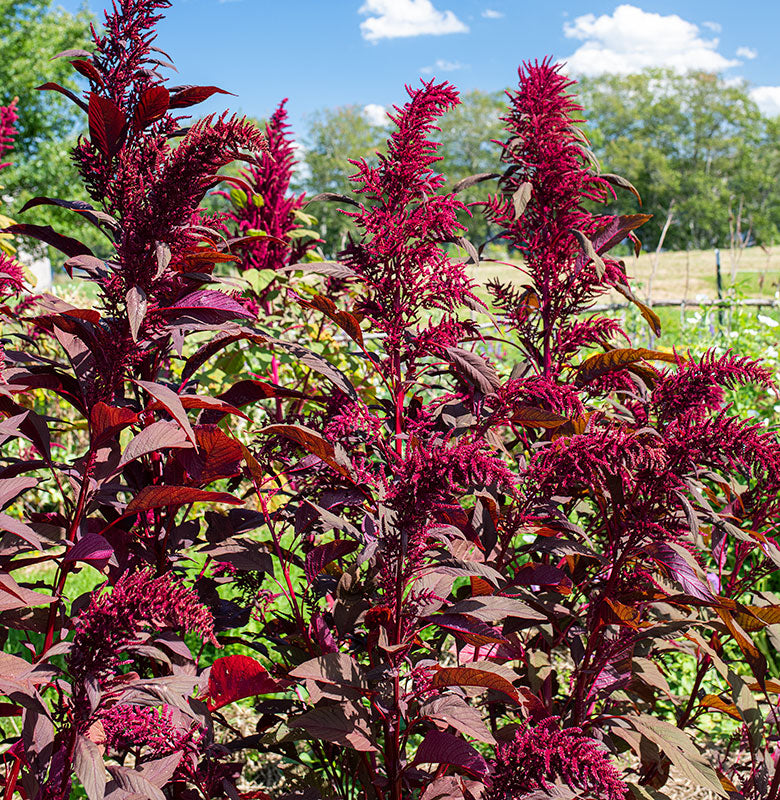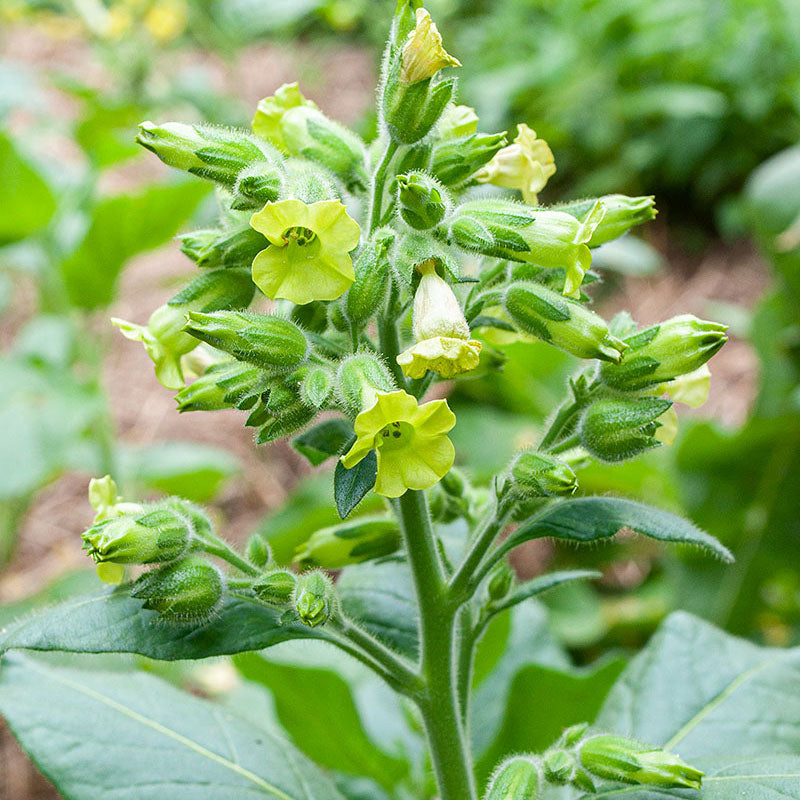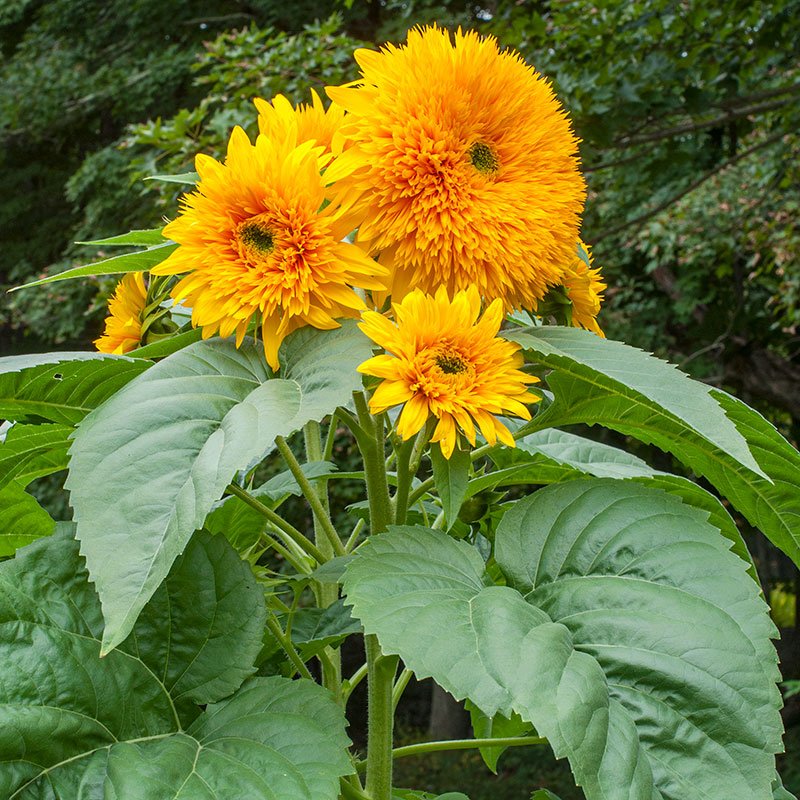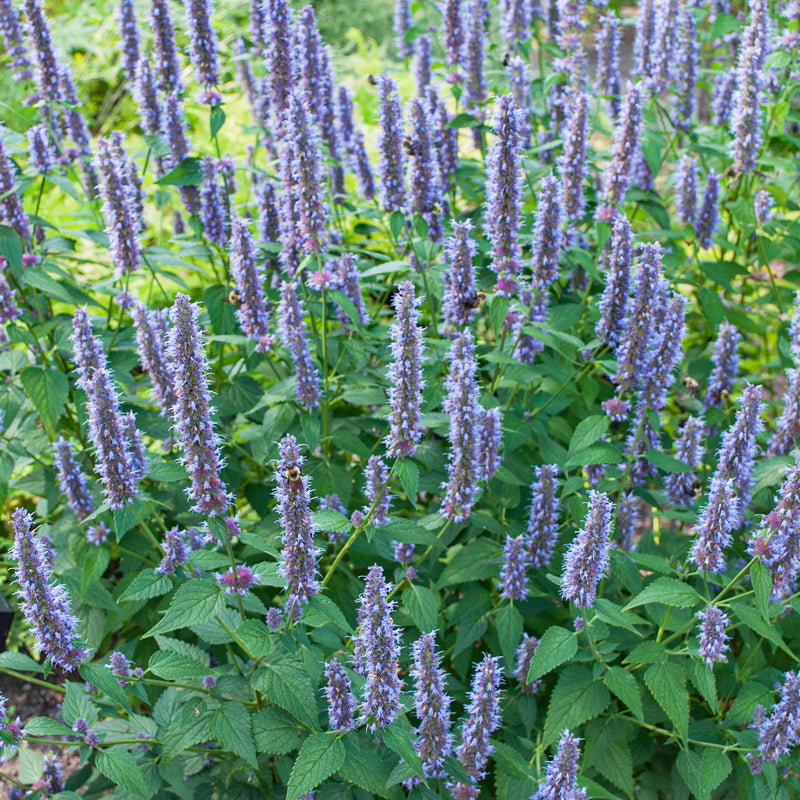SOWING INSTRUCTIONS
Depth:
Barely cover 1/16"
Starting Indoors:
Six weeks before last frost, sow thinly into pots filled with a mix specifically for seed germination. Keep at 65-75°F with evenly moist conditions by placing a humidity dome over the containers until germination occurs, or by sprinkling a thin cover of vermiculite over the pots.
Starting Outdoors:
Direct sow after last frost.
WHEN TO SET OUTSIDE
After all danger of frost has passed.
PLACEMENT & CULTIVATION
Amaranth is a dramatic addition to any garden bed, adding bold texture and height to the landscape. This versatile plant thrives in well-drained soils and is particularly well-suited for sunny locations planted alongside sunflowers and salvias. Amaranth also offers a unique and delicious addition to vegetable gardens. The greens of this plant are highly nutritious and packed with essential vitamins and minerals, and the abundant tiny seeds of the Amaranth plant are a popular and healthy grain. In addition, Amaranth is a self-sowing plant, meaning it will produce new plants each year from dropped seeds. Any excess can be pulled when young and added to salads.
Watering Details:
Drought tolerant. 1" a week until established; then water during dry spells.
Soil pH:
Slightly acidic to neutral
Fertilizer:
If soils are particularly poor, mix in an organic granular fertilizer once seedlings have reached 6-8" in height. Avoid excess fertilizer.
Diseases & Pests:
Tarnished plant bugs can infest flower heads. Use an organic insecticide to control. Provide freely-draining soils, for, in wet soils, emerging seedlings may die from soil pathogens. Overly moist soils also encourage various fungal root and stem rots on mature plants, causing collapse.
When to Cut for Bouquets:
Harvest for fresh cuts when 1/2 to 3/4 of the florets are open.






























